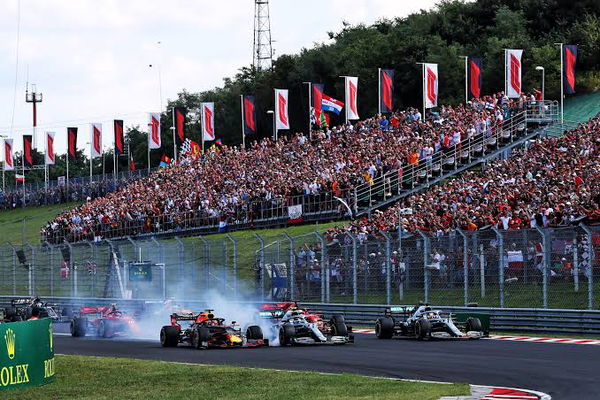
Imago
Credits: FIA Instagram

Imago
Credits: FIA Instagram
Imagine driving at 220mph and you can’t even turn on the AC for some cool air! Well, the F1 racers at the 2023 Qatar GP had to face exactly this situation. In the hot tropical climate of the Middle Eastern country, racers like George Russell got a health scare. The Mercedes racer later told his interviewers that the cockpit temperature was about 122° F at one point during the race. Alpine’s Esteban Ocon admitted to being nauseous during the race at the Losail Circuit. In fact, Williams racer Logan Sargeant suffered from such severe dehydration that he had to retire from the Qatar GP 2023 altogether.
Watch What’s Trending Now!
Ever since that infamous race, the rising temperatures at some of the F1 tracks have been a cause for concern. Now that the Hungarian GP is coming up, those worries have returned. The dry, hot weather in Hungary might once again give flashbacks of the Qatar GP to the racers. But the FIA wants to ensure the drivers’ safety at all costs by avoiding the ‘Hungarian GP problem’. Hence, the committee has come up with an ingenious solution to the heat woes in Formula 1: they want to fit ACs in the F1 racecars.
Take any F1 car, and you will find that the cockpit is an open area that is guarded by the halos. If the FIA wants to fit an air conditioning system, they will need to make the cockpit a closed space at first. But if they manage to pull through, this move will ensure the racers have no difficulty completing 77 laps for over 3 hours at circuits like the Hungaroring.
ADVERTISEMENT

ADVERTISEMENT
FIA’s statement to Autosport has revealed, “In response to the extreme temperatures experienced at last year’s Qatar GP, the FIA and all F1 teams immediately initiated research to improve the venting and cooling of drivers in such conditions. These joint research activities have advanced and focused on the development of an active cooling system which would be installed in F1 cars when facing extreme conditions.” Thus, the vents in the F1 cars will not be like the traditional air conditioning systems. So, let us get into more details on how this thing will work.
ADVERTISEMENT
FIA’s aircon for F1 cars is nothing like the traditional ACs
The traditional air-conditioning unit will definitely be too heavy for F1 cars. As they need to travel at a much higher speed than regular cars, the race cars cannot afford such aircon technologies. However, the FIA believes it can work around this limitation. The rule-making body of F1 wants to ensure the racers get enough ventilation without the need to install traditional ACs in the cockpits. FIA’s planned system will be fitted into the different small structures present in the cockpit. Through them, fresh air will come in and splash the drivers by a “passive scoop” mechanism.

Reuters
Formula One F1 – Pre-Season Testing – Bahrain International Circuit, Sakhir, Bahrain – February 21, 2024 McLaren’s Oscar Piastri during the pre-season testing REUTERS/Hamad I Mohammed
The FIA has also shared that it will run tests on the vent system at the Dutch Grand Prix in Zandvoort once the summer break ends. Moreover, the committee will reportedly allow the different F1 teams to resort to “exceptional measures” to bring down the temperature of their drivers’ equipment before each racing session. This further proves that FIA took things seriously when last year’s race in Qatar led to severe health repercussions for racers like Lance Stroll who complained about feeling like fainting in the heat.
ADVERTISEMENT
Speaking of the rising heat in the cockpit, the upcoming Hungarian GP will be one of the hottest races of this year. With projected temperatures touching the 95°F mark, the Pirelli tires might become the main characters of this weekend’s fight. In the end, the racer who manages his tires the best will win the race. Who, do you think, will be that Champion? Share in the comments below.
Top Stories
Max Verstappen’s Siblings: Everything We Know About Victoria, Blue Jaye, Jason Jaxx, and Mila Faye

Who Are Lando Norris’s Parents? Meet Adam Norris and Cisca Wauman

Despite Shocking Breakup With Charles Leclerc, Ex GF Still Shares Close Ties With Ferrari

Toto Wolff Reveals Ayrton Senna’s Tragic Death Destroyed His F1 Racing Dream

F1 Gets Golden Andretti Advice as Red Bull’s Sergio Perez Strategy Promises American Boost in the Sport

ADVERTISEMENT
ADVERTISEMENT
ADVERTISEMENT

